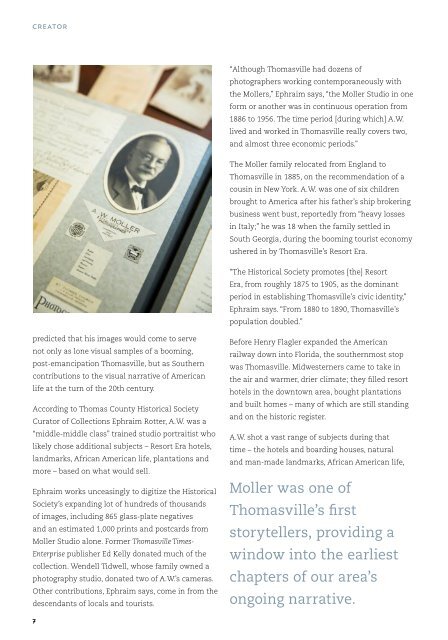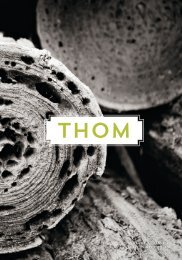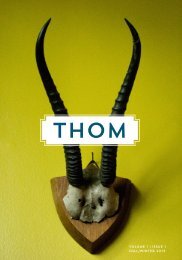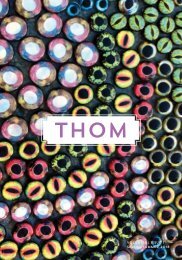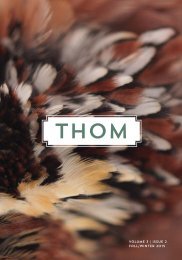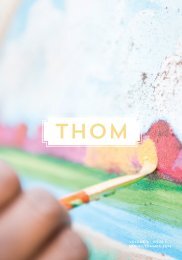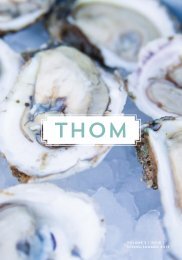THOM 9 | Fall / Winter 2017
Create successful ePaper yourself
Turn your PDF publications into a flip-book with our unique Google optimized e-Paper software.
CREATOR<br />
“Although Thomasville had dozens of<br />
photographers working contemporaneously with<br />
the Mollers,” Ephraim says, “the Moller Studio in one<br />
form or another was in continuous operation from<br />
1886 to 1956. The time period [during which] A.W.<br />
lived and worked in Thomasville really covers two,<br />
and almost three economic periods.”<br />
The Moller family relocated from England to<br />
Thomasville in 1885, on the recommendation of a<br />
cousin in New York. A.W. was one of six children<br />
brought to America after his father’s ship brokering<br />
business went bust, reportedly from “heavy losses<br />
in Italy;” he was 18 when the family settled in<br />
South Georgia, during the booming tourist economy<br />
ushered in by Thomasville’s Resort Era.<br />
“The Historical Society promotes [the] Resort<br />
Era, from roughly 1875 to 1905, as the dominant<br />
period in establishing Thomasville’s civic identity,”<br />
Ephraim says. “From 1880 to 1890, Thomasville’s<br />
population doubled.”<br />
predicted that his images would come to serve<br />
not only as lone visual samples of a booming,<br />
post-emancipation Thomasville, but as Southern<br />
contributions to the visual narrative of American<br />
life at the turn of the 20th century.<br />
According to Thomas County Historical Society<br />
Curator of Collections Ephraim Rotter, A.W. was a<br />
“middle-middle class” trained studio portraitist who<br />
likely chose additional subjects – Resort Era hotels,<br />
landmarks, African American life, plantations and<br />
more – based on what would sell.<br />
Ephraim works unceasingly to digitize the Historical<br />
Society’s expanding lot of hundreds of thousands<br />
of images, including 865 glass-plate negatives<br />
and an estimated 1,000 prints and postcards from<br />
Moller Studio alone. Former Thomasville Times-<br />
Enterprise publisher Ed Kelly donated much of the<br />
collection. Wendell Tidwell, whose family owned a<br />
photography studio, donated two of A.W.’s cameras.<br />
Other contributions, Ephraim says, come in from the<br />
descendants of locals and tourists.<br />
Before Henry Flagler expanded the American<br />
railway down into Florida, the southernmost stop<br />
was Thomasville. Midwesterners came to take in<br />
the air and warmer, drier climate; they filled resort<br />
hotels in the downtown area, bought plantations<br />
and built homes – many of which are still standing<br />
and on the historic register.<br />
A.W. shot a vast range of subjects during that<br />
time – the hotels and boarding houses, natural<br />
and man-made landmarks, African American life,<br />
Moller was one of<br />
Thomasville’s first<br />
storytellers, providing a<br />
window into the earliest<br />
chapters of our area’s<br />
ongoing narrative.<br />
7


